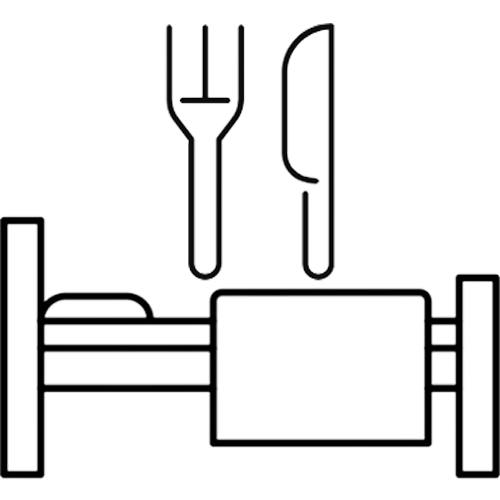Žemaičių Naumiestis is an old Samogitian border town that has been inhabited since the 14th century. The town gained special significance after the 1863-1864 Uprising, when the Lithuanian press was banned and it became an important distribution point for forbidden literature. One of the most important routes for book carriers passed through the town. In 1910-1914, Fridrikas Megnius, an Evangelical Lutheran priest, published the Lithuanian-language newspaper “Svečias” in Naumiestis, which was the only newspaper published in Samogitia. More than 100 years later, several copies of this newspaper were found during the completion of the renovation of the parsonage of the Evangelical Lutheran Church.
The old market square of Žemaičių Naumiescis, cobbled and little changed since the beginning of the 19th century, is a testimony to the multicultural life of the town on the outskirts. The houses that stand here as living exhibits remind us of the Jewish, Lithuanian and Lithuanian shops, taverns and workshops that used to operate there. Naumiestis was home to two weekly markets, several annual markets, a customs office (at the Russian-German border), about thirty shops and taverns, an electric power station, a steam sawmill, a water mill, a knitting mill, a bakery, an elementary school, a junior high school, a library, and more. The town has been beautifully rebuilt, with a tidier layout, sidewalks, a paved town centre and more important streets.
Naumiestiai residents were active in building an independent Lithuania. When Lithuania regained statehood in 1918, Naumiestis became the centre of the district and was called Tauragės Naumiestis. In the fourth decade of the 20th century, the town was renamed Žemaičių Naumiesčius.
On the Vanagiai Mound, also known as the Green Hill, proudly stands St. The Roman Catholic Church of Archangel Michael was built in 1782. It is a wooden church of folk architecture with neo-Gothic features. It contains religious paintings and sculptures of artistic value. The present church building has a cruciform plan, with a small tower in the roof cross. The church was built in 1842 for Evangelical Lutherans. Žemaičių Naumiestis was home to a large Jewish community, as evidenced by the large stone synagogue, built in 1816, which has survived until today. During the Soviet years, it was used as a cultural centre. The dilapidated building is now disused. In Žemaičių Naumiestis, everyone had their own house of worship.
The town’s architecture has remained unchanged over the years, attracting Lithuanian film-makers. Every year in autumn, the beautiful Žaliasis Hill hosts the autumn harvest festival – Dagotuvės.
Žemaičių Naumiestis
Paskutinį kartą redaguota: 2023-12-19





































